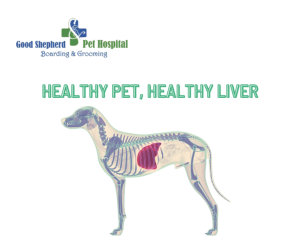 Liver Disease in Pets
Liver Disease in Pets
What does the liver do?
- It produces the essential protein, albumin.
- It stores minerals and fat-soluble vitamins, such as A, D, E, and K.
- It helps the body get rid of wastes and poisons.
- It stores energy.
- It metabolizes proteins, fats, and carbohydrates.
- It helps with digestion and blood clotting.
Anything that gets into the bloodstream, either by being absorbed through the digestive tract or from other avenues, travels through the liver.
Conditions that can affect the liver:
- An abnormal blood flow
- Cancer
- Infections
- Injuries
Symptoms of liver disease in pets:
When the liver is not doing what it should, it can affect the body’s other systems and functions, which can lead to lethargy or loss of appetite. Sometimes, it can cause severe neurological conditions like seizures and stupor. Some of the symptoms may include:
- Loss of appetite
- Weight loss
- Vomiting or diarrhea
- Excessive thirst and urination.
- An unstable walk
- Confusion
- Yellowish eyes, tongue, or gums (jaundice)
- Signs of weakness
- Bleeding disorders
- Seizures
- Ascites (a buildup of fluid in the belly)
It’s easy to miss the symptoms of liver disease. They’re similar to those for other problems. If your pet’s liver disease isn’t caught early, it can lead to a serious health condition.
- To figure out why your pet isn’t acting happy and healthy, talk us today at (813) 920-0303. We may use blood and imaging tests to look for clues. Based on the results, we will determine the best treatment to get you both on the mend.
- Good Shepherd Pet Hospital has integrated the latest Digital Radiography, Ultrasonography, and in-house Laboratory into our “Technology Toolkit” to provide our patients with the best possible in-house diagnostic resources.





